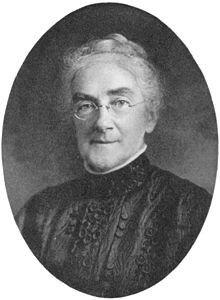
Ellen Henrietta Swallow Richards. Image from The Life of Ellen H. Richards, by Caroline L. Hunt, 1912.
Today, Home Economics classes are generally considered dreary and outdated, but they might not exist at all without Ellen Henrietta Swallow Richards. Born in 1842, Ellen was the first woman to be admitted to MIT (the Massachusetts Institute of Technology), and also became it’s first female instructor. She was also the first American woman to earn a chemistry degree, which she used in her work as an industrial and environmental chemist. In 1875, she married Robert Richards, and they worked together on the chemistry of ore analysis. For her work, she became the first female member of the American Institute of Mining and Metallurgical Engineering. In 1876, she opened the Women’s Laboratory at MIT, where she taught basic and industrial chemistry, biology, and mineralogy to women.
Soon Ellen became interested in sanitation, especially water quality. She took over 40,000 samples of the water in her area, which ultimately led to Massachusetts creating the first modern sewage treatment plant and establishing America’s first water-quality standards. She also applied her interest in sanitation to the home, believing that women – the people primarily in charge of the home and kitchen – should be educated in the sciences. She wrote books about science and its use in the home, and used her own home to test her ideas for healthier living through science. She and her husband installed fans to ensure they had clean air within their home, and also tested their well water to ensure it wasn’t contaminated with waste water.
In 1890, Ellen opened the New England Kitchen in Boston to provide low-cost, nutritious food and instruction in food preparation to working class families. Ellen lobbied for providing school lunches and courses in domestic science in public schools, making her the founder of home economics curriculum. She was founded, and was elected president of, the American Home Economics Association. In 1910, she started the Journal of Home Economics.
